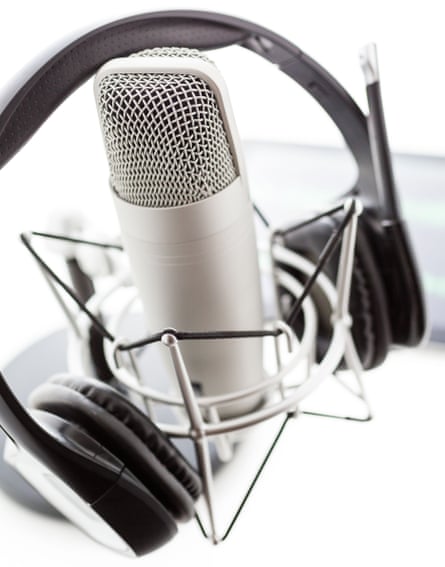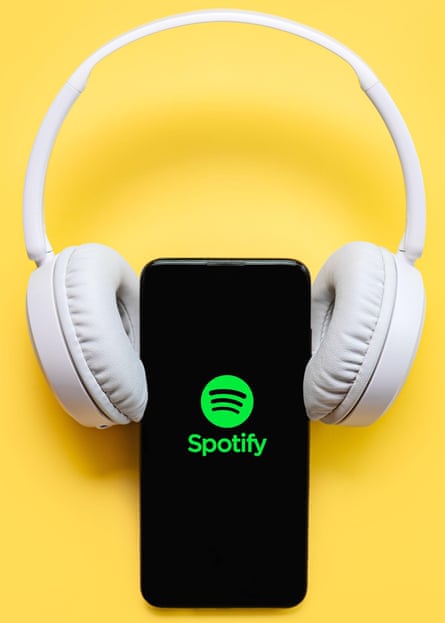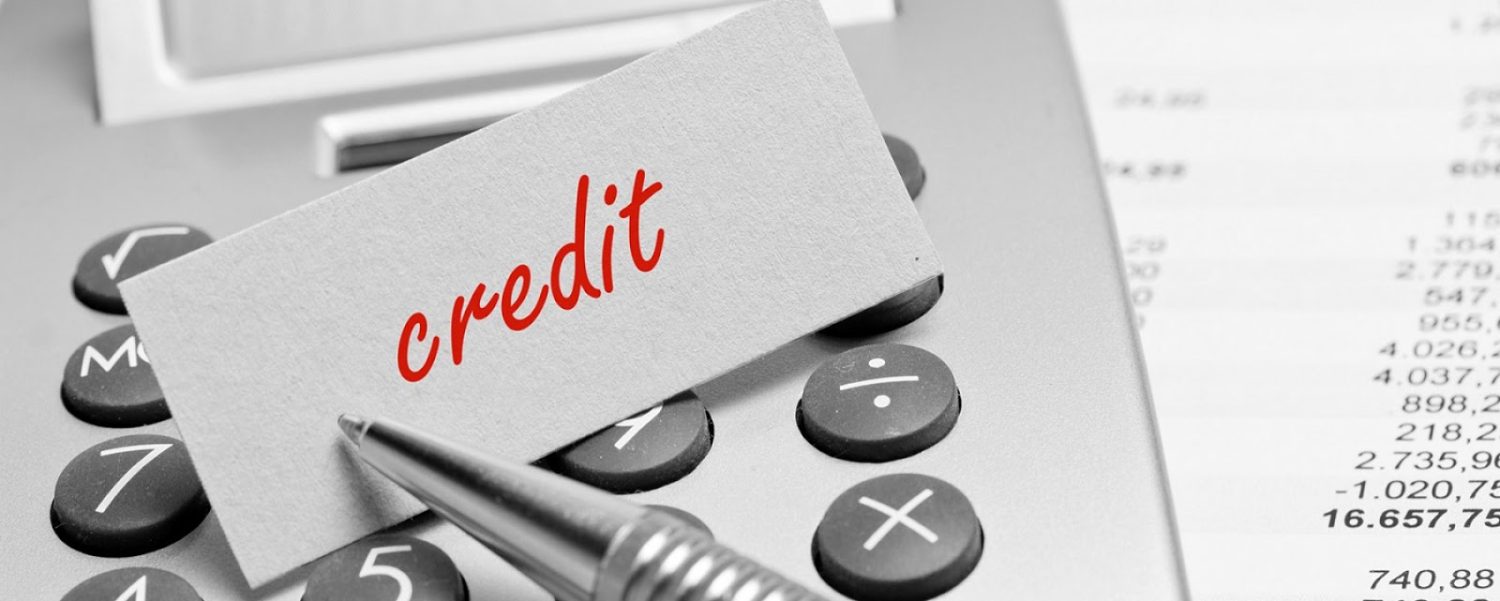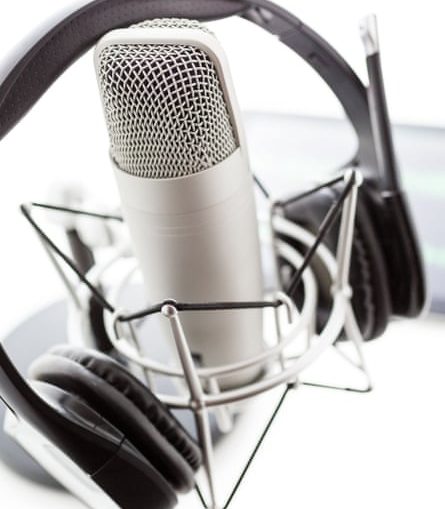Everyone, they say, has a story to tell, and increasingly those stories are being told directly into the ears of podcast listeners – which, according to Ofcom, was about 25% of the adult population in the UK in 2021. If you have something to say, podcasting provides an easy, accessible and low-cost way to say it.
Start with your idea
“The most important thing is the idea,” says Martin Bojtos, the co-founder of the podcast creators and producers Podmasters. “You can have the best mic, the best mixer, the best audio editor, the best music – they won’t make a good podcast.”
So how do you choose? Start with what you know. “Great podcasts are based on passion, expertise or experience,” says Vic Elizabeth Turnbull, the founder and chief executive of MIC Media, a podcast production and training social enterprise. “Think about what you feel strongly about. What have you done?”
Ian Sanders, the creator of Cold War Conversations, adds: “Choose a subject you can be passionately engaged with in 20 or more episodes’ time, and one with no shortage of angles.”
Define your audience
It is all about storytelling, says Sam Shetabi, the UK content director of the podcast hosting company Acast.
“Ultimately, every story has a beginning, middle and end, and it’s important to think about how you tell that,” he adds.
Part of the process is not being so hamstrung by getting the idea perfect, to the point that you don’t record anythingAcast’s Sam Shetabi
One way is to imagine who the listener is. “Decide on your ideal listener,” Turnbull says. “When you can define your audience, everything becomes clearer.”
For Sanders, that ideal is a history buff with an interest in the cold war. “I wanted to capture the whole range of stories, from the military, spies, factory workers, dissidents, anybody who experienced it,” he says. He speaks to a lot of history buffs. To date Cold War Conversations has had 2.3m downloads.
It doesn’t have to be perfect. “I endorse the idea of casual podcasting and learning as you go,” Shetabi says. “Part of the process is not being so hamstrung by getting the idea perfect, to the point that you don’t record anything. Your listeners have a direct connection with you as a host, so you can fail ‘out loud’ and learn from it.”
Don’t overspend
Mark Asquith, the managing director and co-founder of the podcast hosting platform Captivate.fm, says: “As a new podcaster, it’s easy to think the equipment will make all the difference when, in reality, a decent mic is just as good as a great mic.”
Turnbull says: “I feel very strongly that you should only buy what you need. People buy the whole kit and caboodle, with a fancy microphone, an interface, a new laptop. But there’s no point in being ‘all gear and no idea’. You only need four things, and three you’ve probably already got: a microphone, something to record into and store your recordings, headphones and something to edit on.”
 View image in fullscreenYou do not need to choose expensive equipment to create a podcast. Photograph: Arina Habich/Alamy
View image in fullscreenYou do not need to choose expensive equipment to create a podcast. Photograph: Arina Habich/Alamy
In theory, then, anyone with a smartphone is equipped.
If you do want to upgrade, Bojtos says: “The first piece of equipment to get is a good mic, and you can get them from about £50 – £60.” The Samson Q2u USB, which Asquith recommends, costs about £80, while Bojtos mentions the Blue Yeti USB which costs about £100.
Seek out used equipment on sites such as eBay or Facebook Marketplace, or secondhand shops. “I bought my first microphone at Cash Converters, and I’m still using it,” Turnbull says.
Asquith adds: “Sounding great is all about microphone technique. Get up close, within a fist width of the microphone, and adjust your input volume to keep it in the green on your recording software.”
Keep it tight
“I’ve been a professional broadcaster, and I still waffle. But you do need to get to the point,” says Elinor Hamilton, who makes Tales from the Tannoy, about the stories behind the automated voices in our everyday lives. (She knows a thing or two about it – Hamilton is the voice announcing stations on the London Underground.)
Cut out surplus waffle with free editing tools such as Audacity or the podcast one-stop-shop Podcastle, while a popular subscription service, Adobe Audition, costs £19.97 a month. “You do need to know what you’re doing,” Bojtos says. “Often, people get on YouTube and learn everything; it’s not impossible. But people are busy and there is only so much you can keep in your head, so a lot of people hire an editor.”
It is an option that suits Sanita Guddu, a fundraising consultant and trainer who presents Legacy Fundraising Chat, a podcast for charity sector professionals. She wrote and recorded all her podcast episodes in only four months, but says hiring a freelance editor is a more efficient use of her time.
Know it takes time
Financial and technological barriers to starting a podcast are very low but one thing many people underestimate is the time it takes to put one together.
Sanders says: “If people listen to, maybe, a 45-minute episode, or an hour’s, they might think: ‘Well, you know, all he did was press record.’
“But you’ve got to do the research so you are knowledgable enough about a subject to ask pertinent questions. Then there’s the editing, which can be three or four times the length of the actual recording.”
Sanders estimates he spends 10 to 12 hours on each episode.
 View image in fullscreenTo make your podcast available you need to use a platform so it is distributed to Apple, Spotify, Google or elsewhere. Photograph: Esther Moreno/Alamy
View image in fullscreenTo make your podcast available you need to use a platform so it is distributed to Apple, Spotify, Google or elsewhere. Photograph: Esther Moreno/Alamy
Get your image right
“Artwork is the only real window you give to your podcast. You have a very small, thumbnail-sized bit that can convey everything about your show,” Shetabi says.
“There are lots of free design tools like Canva, which makes designing something like that much simpler.
“But if I was getting really serious about podcasting, that’s the one thing I would invest in. It might cost from £100 to £300 but is quite a good investment.”
Choose a hosting provider
To make your podcast available, you need to use a platform, such as Captivate.fm, Acast, Anchor (owned by Spotify), Libsyn, Audioboom or Buzzsprout.
Some offer free basic packages, and monthly fees increase depending on the number of times your podcast is downloaded.
The platform allows it to be distributed to Apple, Spotify, Google or anywhere else people get their podcasts from.
Tell everyone about it
Hosts will get it out there but for the most part that’s where it stops – and the hard work starts.
It comes back to knowing your listener – and finding where people who share your passion hang out – on Twitter, Reddit, Facebook or anywhere where you can put the word out.
One effective method is “making buddies with other podcasters”, Turnbull says.
Find those in your area of interest and invite them on to your show, be a guest on someone else’s podcast or make a short trailer and then swap trailers with other podcasters so you can promote each others’ work.
 View image in fullscreenKnow your podcast listener and find out where people who share your passion hang out – on Twitter, Reddit, Facebook or elsewhere. Photograph: Barry Diomede/Alamy
View image in fullscreenKnow your podcast listener and find out where people who share your passion hang out – on Twitter, Reddit, Facebook or elsewhere. Photograph: Barry Diomede/Alamy
Don’t give up the day job (yet)
“With Acast, you can start earning money from literally your first listen. From day one, you can say: ‘I want to enable monetisation,’ and Acast ads will populate your podcast, and you can choose where you want them to be,” Acast’s Shetabi says. Revenue is based on a cost per thousand (or CPM) basis – the more thousands of listeners you have, the more money you earn. If your listeners are in the hundreds, then you would be earning pennies.
Other models include subscriptions, regular payments through sites such as Patreon, and charging listeners per podcast. But whatever model you choose, earning a living is far from a given; even with 2.3m downloads and a loyal following of paying subscribers for Cold War Conversations, for now at least, Sanders isn’t giving up the day job.





Leave a Reply
You must be logged in to post a comment.